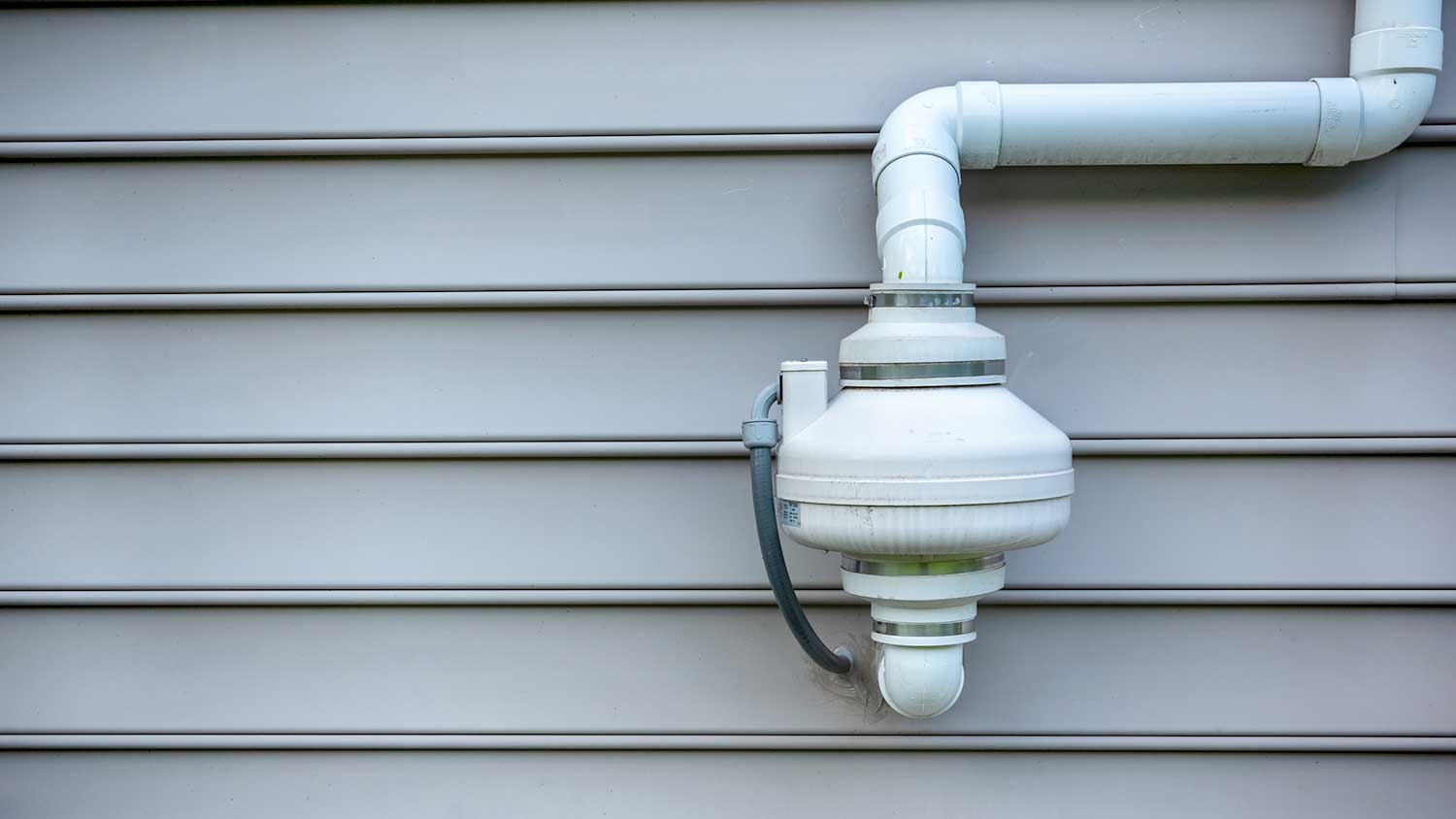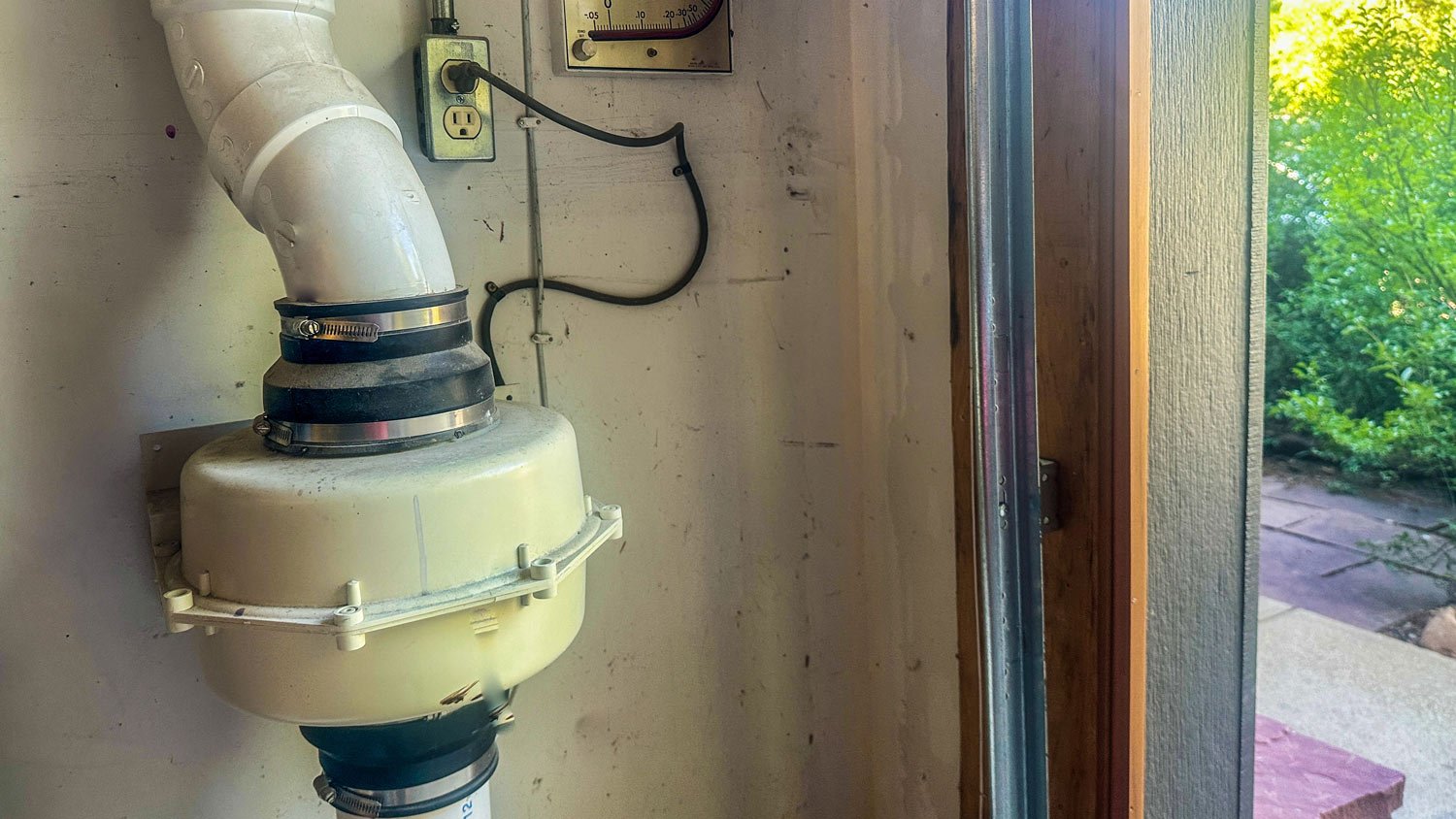
Get clear answers on how much radon remediation costs, including average prices, key cost factors, and tips to save money on your home’s radon mitigation.
This radioactive gas may be an uninvited house guest, but you can breathe easy with the right mitigation strategy


Radon is a naturally occurring radioactive gas.
Radon is the second leading cause of lung cancer.
Most radon exposure happens in homes and workplaces.
There are several ways to reduce radon levels in your home.
Out of sight, out of mind, right? Much like a forgotten family photo album, radon gas hangs out in basements and crawl spaces and can seep into your living space. You can’t see it, you can’t smell it, and you can’t taste it. Is it really that big of a deal? Yes, but don’t worry, testing and radon reduction strategies can help protect your family from exposure.
What is radon gas and why are so many homeowners concerned about it? Radon is a radioactive gas that you probably encounter every day—albeit in harmless amounts. This type of gas naturally occurs when uranium breaks down in soil, rocks, and groundwater. Radon only becomes a problem when it gets trapped indoors and can’t dissipate in the atmosphere.
How does radon enter a home? Many homes are built on soil that contains natural uranium deposits. The Environmental Protection Agency (EPA) created a handy map of the country’s radon zones for reference. Radon is a sneaky gas because it can enter a building through any sort of crack, gap, drain, cavity, or construction joint. Basements and crawl spaces tend to collect the highest levels because they’re closest to the ground, but it can be found everywhere, including in your drinking water.
Radon exposure doesn’t make you sick overnight. You can breathe in radioactive radon particles for years before there’s ever a problem, but it’s still the second leading cause of lung cancer in the United States. The EPA estimates that radon gas is responsible for 21,000 lung cancer deaths every year. Radon can also cause other health issues, such as:
Respiratory problems: Prolonged exposure to high radon levels may irritate the airways, leading to shortness of breath, chronic cough, or other respiratory discomfort, especially in those with pre-existing conditions like asthma.
Chronic obstructive pulmonary disease (COPD) escalation: While not a direct cause, radon exposure could exacerbate conditions such as emphysema or bronchitis due to the irritation of lung tissue over time.
Potential cardiovascular effects: There is a possible link between radon and heart disease due to oxidative stress and inflammation caused by radioactive particles.
Exposure to radon over a long period of time can cause serious health problems, including lung cancer. Lowering radon in your home requires professional knowledge and skills only available by hiring a radon mitigation pro.
How can you lessen the risks associated with radon exposure? Here’s another good reason to quit smoking. People who smoke are 25 times more at risk from radon exposure, but you’re also at risk if you:
Live in an area with high levels of radon.
Spend a lot of time indoors.
Spend a lot of time in rooms that are in contact with the ground.
Have a job where you’re exposed to radon (like coal miners).
Since you can’t see or smell radon gas, testing is the best way to find out whether your home contains dangerous radon levels. You can either hire a professional radon tester or use a DIY radon gas test kit, which is sold at most hardware stores for under $30. You’ll typically have to leave the kit out for three to seven days, and then mail it to a lab to get your results.
You can test for radon yourself, but it’s not as accurate as professional testing. Professionals have specialized equipment, training, and radon testing certification. They know where to test and how to test, but it will cost you. The average professional radon test costs around $400, but it’s a small price to pay for peace of mind.
If you decide to self-test, you’re likely wondering what numbers you should hope to see. The ideal radon level in a home is below 1.3 picocuries per liter (pCi/L), which is the average indoor radon concentration in the U.S. according to the EPA. Levels of 4 pCi/L or higher are considered a cause for concern and warrant immediate mitigation, as prolonged exposure at or above this threshold significantly increases the risk of lung cancer.
Radon levels between 2 and 4 pCi/L should also be addressed, as there is no safe level of radon. Reducing levels in this range can still lower health risks, and the EPA recommends considering mitigation in these cases.

If you find radon in your home, don’t panic. Even high levels of radon can be successfully reduced. The EPA recommends bringing in a radon mitigation professional if levels are at or above four picocuries per liter—though lower levels still pose a health risk. Common radon mitigation strategies that professionals will use to combat radon include:
A well-placed radon reduction system can reduce radon levels in your home by as much as 99%. These systems typically use a fan or a pump to create ventilation and move radon particles away from your home. Even those that passively create ventilation can still cut your existing radon level in half. Most radon reduction systems cost between $450 and $1,500 to install. While you can attempt to install a radon mitigation system yourself, it’s strongly recommended to hire a pro due to your exposure to harmful gases.
Sealing unfinished basements, crawl spaces, floors, and walls will help prevent radon from entering your home. It costs an average of $4,600 to seal an entire basement, but even just filling in the cracks with a radon sealant can help.
A home’s crawl space is like an open front door for radon particles. It doesn’t take much for radon to rise from the open soil into your home. Encapsulating your crawl space using a radon membrane can help. Crawl space encapsulation can cost between $1,500 to $15,000, depending on the size of the crawl space.
An unfinished basement is more susceptible to cracks and exposed cavities, which increases the likelihood of radon. Finishing a basements costs on average $18,000, but can vary depending on the size of your space and the features you want added. A very simple job, like adding insulation and drywall, will be on the lower end compared to a full remodel.
If you’re building a new house, ask your contractor about radon-resistant construction. It’s cheaper to build these features in than adding them after the fact, largely due to the additional labor. These features include:
Adding a 4-inch layer of gravel beneath your foundation
Putting plastic sheeting or a vapor retarder above the gravel
Installing a vent in the gravel that rises to the top of your home
Encapsulating the crawl space
Sometimes radon is found in water, though the main health risk is inhalation. You can test your water using an EPA-approved test kit. If you find radon, you can reduce the levels by:
Installing an aeration system: Aeration systems are 95% to 99% effective and cost between $4,000 to $5,000. They work by moving water into a tank and injecting it with air to separate out the radon. Then, the radon is vented out of the tank and way from your home.
Installing a charcoal scrubbing system: Charcoal scrubbing systems (also known as granulated activated carbon filtration systems) are 75% effective and cost between $500 and $1,500. They work similar to a charcoal filter. Carbon absorbs the radon, removing it from the water.
The first step to ridding your home of radon is finding a qualified radon mitigation professional. Although there isn’t a federal licensing board for radon mitigation, some states require contractors to be licensed or registered. Additionally, your contractor may have a certificate from:
The National Radon Proficiency Program (NRPP)
American Association of Radon Scientists and Technologists (AARST)
The National Radon Safety Board (NRSB)
The truth is that radon mitigation strategies do work, and most of the time, they don’t cost much more than the average home repair. Whatever strategy you choose, always test your home after the work is done to ensure success.
From average costs to expert advice, get all the answers you need to get your job done.

Get clear answers on how much radon remediation costs, including average prices, key cost factors, and tips to save money on your home’s radon mitigation.

Discover the average indoor air quality testing cost, what impacts pricing, and how to budget for healthier air in your home.

Find out what impacts radon testing costs, including average prices for DIY kits and professional services, so you can protect your home and budget confidently.

How long does a radon mitigation system last? A properly installed and maintained system can last 20 years or more, but various issues can reduce the life span.

Radon can seep into your home through cracks and small openings. Here's how to get rid of radon and why you need to do it.

Radon is a radioactive gas that can enter a home from the ground. Prepare yourself for mitigation by answering these questions before hiring a pro.